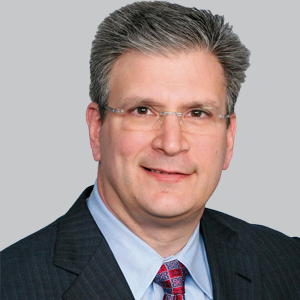News
Video
Episode 3: Overcoming Challenges as a Woman in the Medical Workforce
Author(s):
In this episode, women neurologists share their personal experiences navigating challenges in neurology, offering insights into mentorship, work-life balance, and career advancement.
Women have made significant strides in neurology, bringing unique perspectives and innovations to the field. Historically underrepresented, women neurologists have worked to break barriers, advocate for inclusivity, and address issues like work-life balance and equitable opportunities. Their leadership has driven changes such as flexible scheduling, support for family responsibilities, and expanded resources for women’s health-related neurological issues. As more women enter neurology, their impact continues to grow, enriching the profession with diverse voices and approaches to patient care.
In collaboration with the Association of University Professors of Neurology (AUPN), NeurologyLive® convened a panel of several empowering women in neurology to discuss notable topics related to women involvement in the field. Among them included Carlayne Jackson, MD, FAAN, current president of the American Academy of Neurology, Vanessa Hinson, MD, PhD, a professor of neurology and a movement disorder specialist at the Medical University of South Carolina, in Charleston, and Marie Eugene, DO, an associate professor in the Department of Neurology at the University of Connecticut.
Episode 3 of the series highlights the unique challenges faced by women in neurology, including underrepresentation in leadership roles, navigating imposter syndrome, and balancing family responsibilities with professional demands. The panelists emphasize the importance of mentorship, building support networks, and making strategic career choices aligned with long-term goals. They also discuss how shifts in organizational structures, such as increasing gender representation in committees, are fostering change. Additionally, they offer advice on exploring various practice settings to achieve a work-life balance that aligns with individual aspirations.
Marco Meglio: On the next question, what are some of the biggest challenges you've faced as a woman in neurology, and how have you worked to overcome these?
Carlayne Jackson, MD: Well, I will speak again from my academy experience. When I started on my first committee, only about 20% of the members were women. I had to find the confidence to push forward and continue applying. After my first committee appointment was completed, people encouraged me to apply to the board since there were only four women on it. You talk about imposter syndrome—that took a lot of courage to think, "Okay, I can do this." So, I applied and served on the board for six years. Afterward, someone encouraged me to apply for an officer role. My initial reaction was, “No way,” but then I thought, “If I don’t do it, who will?” So I went for it. It’s about having the confidence to keep pushing forward, even when you’re in the minority. Now, our committees are structured so that 50% of the members are women, and the past three presidents have been women. So I think we’re finally seeing a shift, at least in that organization.
Vanessa Hinson, MD, PhD: Piggybacking off of that, I found it tricky early on, especially with committees and similar roles. Many of us are high-achieving women with a lot of drive, and I struggled to decide what to say no to. A lot of opportunities sound interesting, and people want to help you succeed, but not everything is in your best interest at certain stages of your career. I’ve noticed this in some of the women I mentor too—they don’t always know how to say no. It’s important to choose opportunities that align with your five-year promotion plan. For example, if sitting on an IRB is critical to your goals as a clinician-researcher, say yes. But if a committee doesn’t help move you forward, consider politely declining. Having mentorship for promotion planning is essential to guide these decisions.
Marie Eugene, DO: For me, the challenges go back to the original topic of balancing being a mom and a physician. Juggling these roles has been a big part of my experience. The way I’ve managed is by having a solid “village” for support. For example, my mom is doing pickup for me right now! Having a network of physicians—both women and men—who can offer advice as I navigate academic neurology has also been crucial. Building strong support systems and networks has been key to overcoming these challenges.
Carlayne Jackson, MD: I want to emphasize the importance of mentorship in this process. I had both a “mommy mentor” and a professional mentor. My department chair, who had kids a few years older than mine, was invaluable. She shared advice on summer programs and other opportunities for my kids and became my role model—if she could balance it all, so could I. Academically, I had mentors who helped me with grants and papers, but they served different roles. No single mentor can do everything, so it’s essential to build a “mentorship village.” On top of that, I had my mom and mother-in-law helping with school pickups, so I completely relate to the “village” concept.
Vanessa Hinson, MD, PhD: Since mentorship has come up so many times, I think it’s also important to talk about exploring different practice settings. Many residents only see academic environments and aren’t familiar with other models, like private practice or working in the VA. These can offer more family-friendly schedules—outpatient-only, no call, no weekends. I encourage young neurologists to explore rotations in private practices or other settings during residency to see what fits their career and family goals best.




